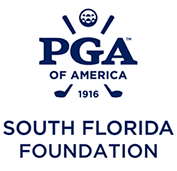The Claw Grip Eases Putting Woes

A Legacy Post by Keiser University College of Golf Senior Faculty and Director of Research Dr. T. J. Tomasi (1940-2023)
Putting Grip Styles
Putting grip styles are an essential aspect of a golfer’s game, directly influencing control and accuracy on the green. Different grip styles cater to varying preferences and physical attributes, allowing players to find the most comfortable and effective method for them. Here are some popular putting grip styles:
- Conventional Grip: The most common style, where both hands are placed on the club with the thumbs pointing down. This grip offers a balance of control and power.
- Reverse Overlap Grip: Similar to the conventional grip but with the index finger of the top hand overlapping the fingers of the bottom hand. It provides added stability and is favored by many professional golfers.
- Cross-Handed Grip: The dominant hand is placed below the non-dominant hand, which can help prevent wrist breakdown and promote a smoother stroke.
- Claw Grip: The bottom hand holds the club like a claw, providing stability and reducing hand action. This grip is particularly useful for golfers who struggle with consistent strokes.
- Arm Lock Grip: The club is anchored against the lead forearm, minimizing wrist movement and promoting a pendulum-like motion. This grip is gaining popularity due to its stability.
- Split-Handed Grip: The hands are separated on the club, which can help reduce wrist action and enhance control. It’s less common but can be effective for some players.
Choosing the right putting grip style can significantly impact a golfer’s performance on the green, so experimenting with different styles to find the best fit is crucial.
Claw Putting Grip
The claw is an unorthodox grip that more than a few players on the PGA Tour use to cure their putting woes. There are several variations of the claw, but this is the “normal” version: First, hold the handle of your putter, using a standard grip. Then let go with your right hand and let your arm hang naturally by your side with the fingers pointing toward the ground. Stretch your right thumb out so that the webbed area between the thumb and the forefinger is taut, and each finger on the right hand is extended. Slide the right hand toward the target until the web of your hand gently touches the handle of the putter below your standard left-hand grip. Keep some bend in your right elbow, and the fingers of your right hand extended. The palm of the right-hand points at the ground in order to seal in the wrist angle (reverse for left-handers).
How to Putt with The Claw Grip
To be a good putter, you need to get both the distance and direction right. The player pictured here handles the direction using the seal of the right wrist so that it and the clubface are one — every place the right-hand goes, the clubface goes. To make sure he has the correct path, he uses two tees to create a gate; then, he simply pushes his right hand through the gate. While it takes a bit of practice to get used to this unusual-looking technique, it is well worth the time and effort, especially if you play the majority of your golf on fast greens.

Start with your normal putting grip.

With the claw, the right wrist is cupped, and the goal is to retain this cup while you putt.
Learn more!
Want more tips? If you want to take your game to the next level, contact our team at Keiser University’s College of Golf & Sport Management today. With our dedication and experience, we can elevate your game to new heights together. Give us a call today at 888-355-4465.














